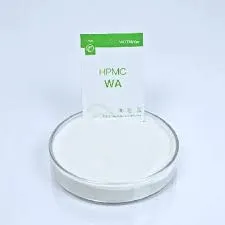
Okt . 10, 2024 12:57 Back to list
what is hpmc used for
Understanding HPMC Uses and Applications
Hydroxypropyl Methylcellulose (HPMC) is a semi-synthetic polymer derived from cellulose, a natural polymer obtained from plant cell walls. With a variety of functional properties, HPMC has become an essential ingredient in various industries, including pharmaceuticals, food, cosmetics, and construction. This article explores the multifaceted uses of HPMC, highlighting its significance in different applications.
1. Pharmaceutical Applications
One of the primary uses of HPMC is in the pharmaceutical industry. As a versatile excipient, HPMC serves multiple functions in drug formulation. It is commonly used as a binder in tablet formulations, providing cohesion to the powder components. This binding capability ensures that the tablets maintain their integrity during manufacturing and handling.
Furthermore, HPMC plays a crucial role in controlling drug release rates. Hydroxypropyl Methylcellulose is often used in controlled-release formulations due to its ability to form a gel-like matrix when hydrated. This property allows for the sustained release of active pharmaceutical ingredients (APIs), leading to improved therapeutic outcomes and reduced dosing frequency.
HPMC is also utilized in the preparation of ophthalmic solutions and contact lens solutions, where its viscoelastic properties enhance the wetting and comfort of lenses. Its inert nature makes it suitable for use in sensitive formulations, thereby minimizing the risk of adverse reactions.
In the food industry, HPMC is recognized for its emulsifying, thickening, and stabilizing properties. It is widely used as a food additive, designated as E460(m) in Europe. HPMC functions as a gluten substitute in gluten-free formulations, improving the texture and cohesiveness of baked goods. Additionally, it helps retain moisture, enhancing the shelf life and freshness of products.
HPMC is also employed in the production of sauces, dressings, and dairy products, where it aids in providing a smooth texture and preventing separation. Its ability to form stable emulsions makes it an ideal candidate for food formulations that require a perfect blend of ingredients.
what is hpmc used for

3. Cosmetics and Personal Care
In the cosmetics industry, HPMC is valued for its thickening, gelling, and stabilizing properties. It is commonly found in lotions, creams, and gels, where it enhances the product's texture and ensures uniform dispersion of active ingredients. HPMC imparts a smooth, velvety feel to personal care products, making them more appealing to consumers.
Moreover, HPMC is used in hair care formulations, including shampoos and conditioners, where it helps improve the consistency and performance of the products. It provides a film-forming capability that leaves a protective layer on the hair, enhancing its appearance and manageability.
4. Construction Industry
HPMC is extensively utilized in the construction industry, particularly in the formulation of cement-based products like mortars, plasters, and tile adhesives. Its water-retention properties prevent premature drying of these mixtures, ensuring proper adhesion and workability. By enhancing the viscosity of the mixtures, HPMC allows for better application and reduces sagging in vertical surfaces.
Additionally, HPMC contributes to the mechanical stability of construction materials, improving the overall performance of the end products. Its versatility makes it a crucial additive in modern construction practices.
Conclusion
In summary, Hydroxypropyl Methylcellulose (HPMC) is a multifunctional polymer that serves as a vital ingredient across various industries. From pharmaceuticals to food production, cosmetics, and construction, its unique properties make it indispensable in enhancing product performance and consumer satisfaction. As industries continue to evolve, the demand for HPMC is likely to grow, affirming its role as a cornerstone in many applications. Understanding the diverse applications of HPMC allows us to appreciate its impact on everyday products and the innovation it brings to modern manufacturing processes.
-
Unlocking the Benefits of HPMC Products: A Gateway to Versatile Applications
NewsAug.07,2025
-
Unleashing the Potential of HPMC Ashland: A Comprehensive Look
NewsAug.07,2025
-
Tile Bonding Cellulose: The Key to Superior Adhesion and Durability
NewsAug.07,2025
-
Hydroxypropyl Methylcellulose Powder: The Versatile Component in Modern Pharmaceuticals
NewsAug.07,2025
-
Hydroxyethyl Cellulose: The Versatile Solution for Various Industries
NewsAug.07,2025
-
Hydroxyethyl Cellulose (HEC): The Versatile Polymer for Various Applications
NewsAug.07,2025







